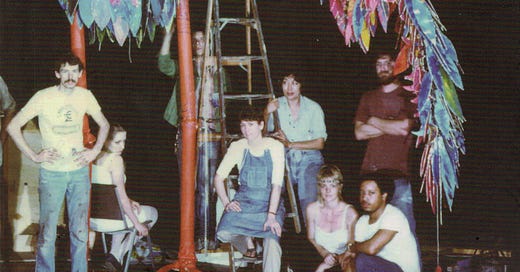Impractical Spaces: Houston is Here
I understand why art history concentrates on the work of individuals—it’s easier to talk about a person who made artworks that we can now view at our friendly neighborhood museum, than it is to try to identify the cthonic forces that came together to make an individual the artist she became. When it comes to understanding art history, I think looking at how artists came together and their material and social conditions tells us more. Or tells me more, at least. So collectives, shared studios, artist run spaces, etc., are especially interesting to me. And there have been a bunch of these spaces in Houston over the past 50 years or so (and I bet this is true of any city of a certain size in the world, outside of totalitarian dictatorships).
Who better than Pete Gershon, author of Collision, an art history of Houston from 1972 to 1985, to put together a book like Impractical Spaces: Houston? It contains 55 short chapters, mostly in the form of interviews with the directors/founders of those spaces. A few of the chapters are written as articles; mostly by Gershon, but I wrote an article about Commerce Street Artists Warehouse, which is clearly something I’ve thought a lot about. Impractical Spaces: Houston is part of a project to document these kind of artists spaces in all 50 states. Their website is interesting but a little out of date, since it doesn’t list Impractical Spaces: Houston on its publications page.
The book will be available from my bookstore and I will carry a few copies on my Storenvy site. But I haven’t put them up yet. Nor have I read the book,, except for my chapter. I will definitely report back when I do—not in a review (which would be unethical in a book to which I contributed) but as a reflection on the totality of Houston’s many alternative art spaces.
[Please consider supporting my work by becoming a patron, and you can also support my work by patronizing my online store. And one more way to support what I do here is to buy books through my bookstore. ]




